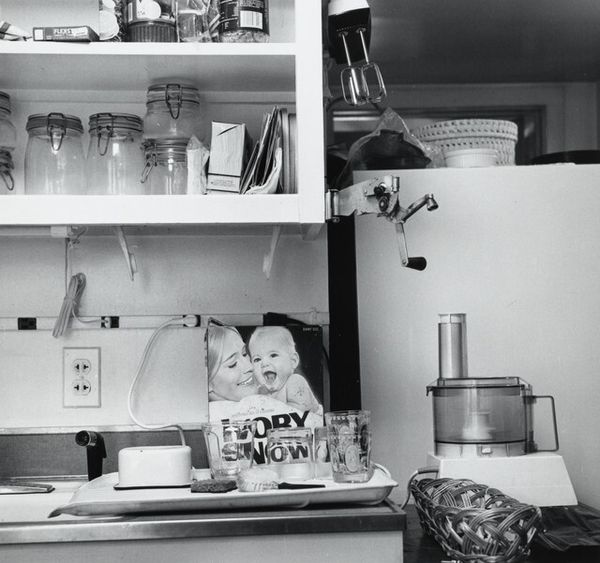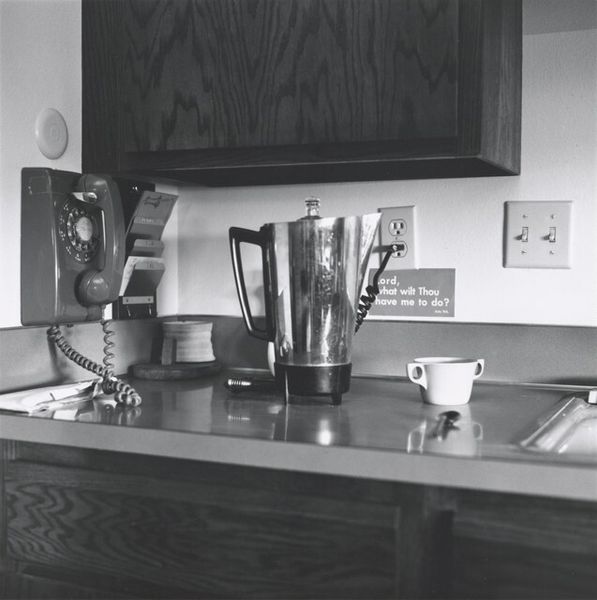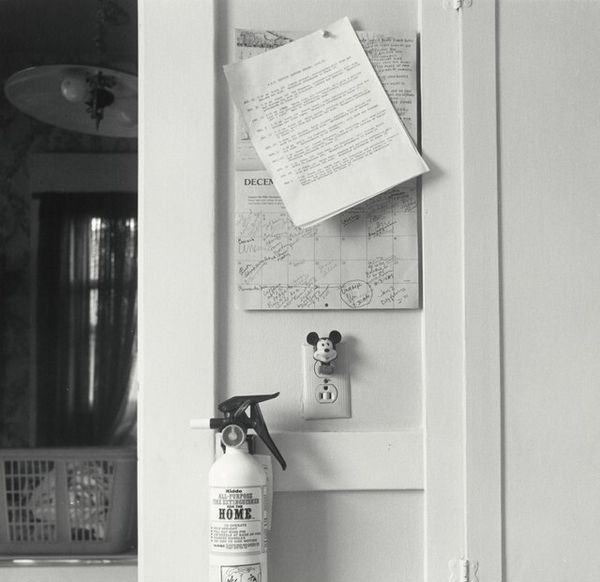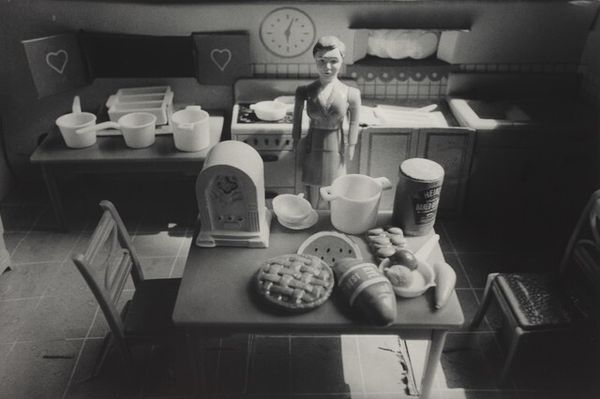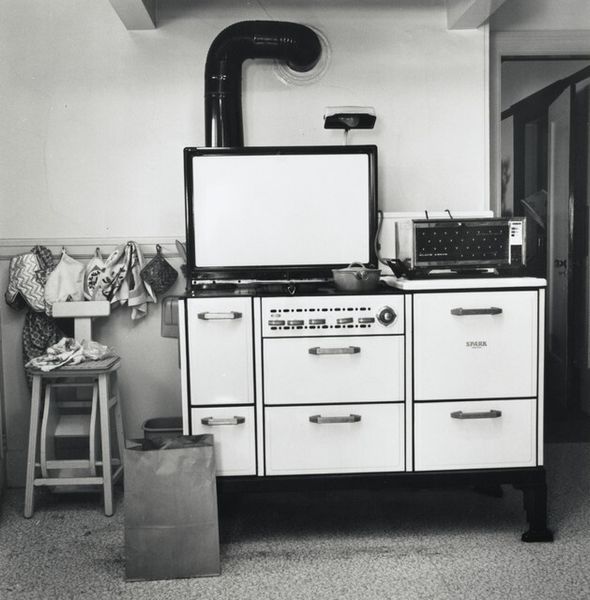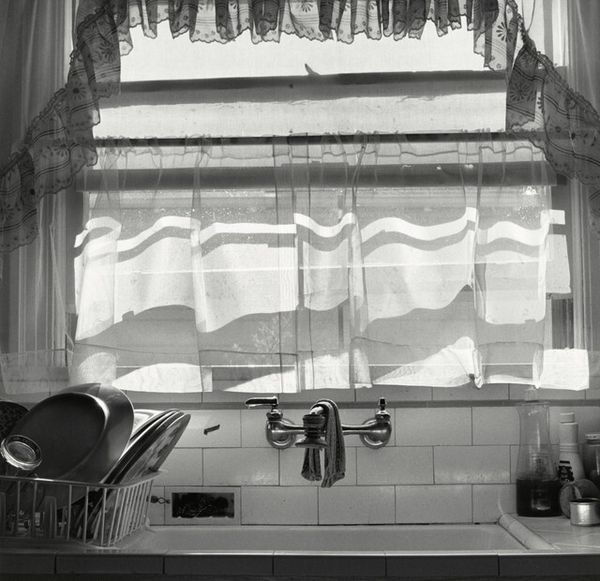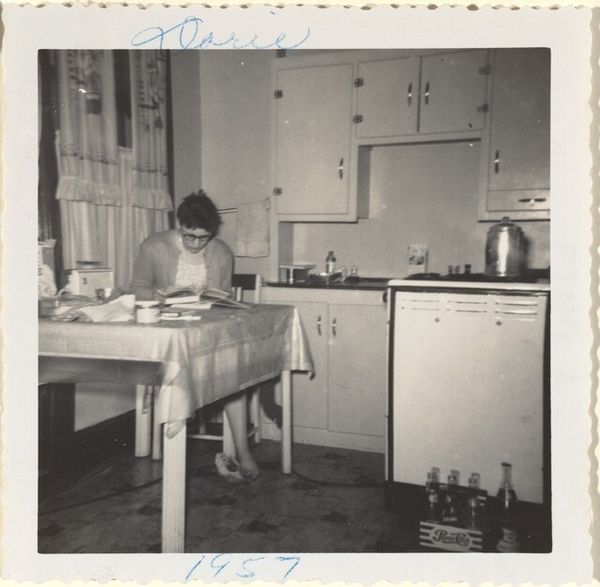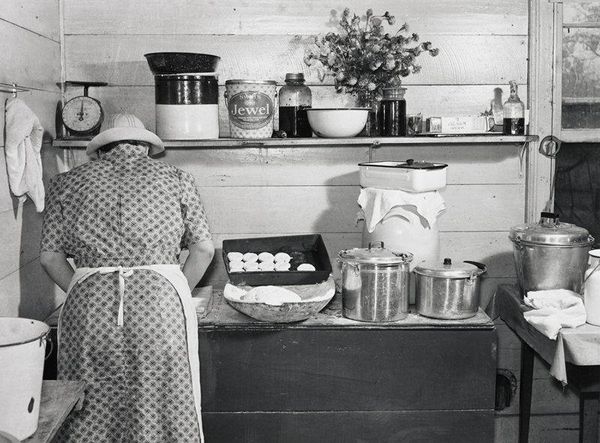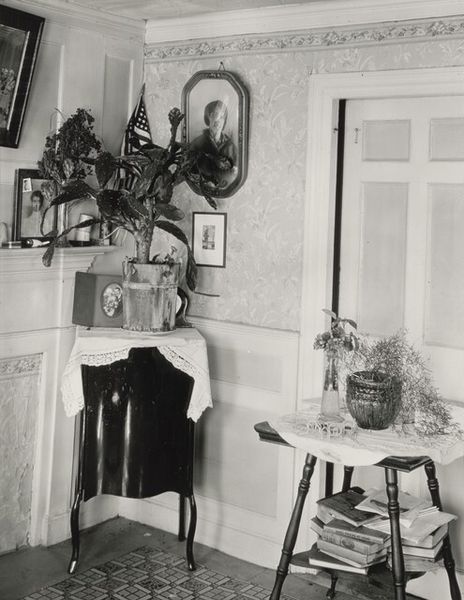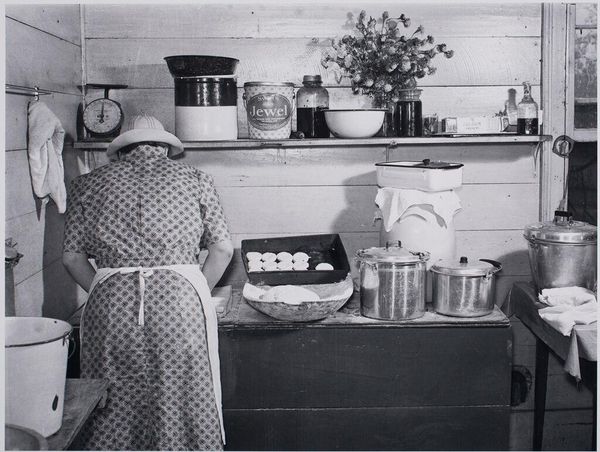
Countertop with Premium Crackers and Pills–and Can Opener c. 1976
0:00
0:00
photography
#
interior architecture
#
contemporary
#
photography
#
ashcan-school
#
realism
Dimensions: image: 17.8 × 17.9 cm (7 × 7 1/16 in.) sheet: 25.3 × 20.3 cm (9 15/16 × 8 in.)
Copyright: National Gallery of Art: CC0 1.0
Curator: This is Joanne Leonard’s photograph, “Countertop with Premium Crackers and Pills–and Can Opener,” taken around 1976. It offers such an intimate view, doesn’t it? Editor: Yes, an immediate impression is its rather stark domesticity. The muted tones and cluttered countertop evoke a very specific era of mid-century kitchens. There is almost a sense of... melancholic constraint about it? Curator: Constraint, interesting. To me, the arrangement feels symbolic, particularly how the artist places these objects together: the "Premium" crackers, the assorted pills, the ever-present can opener, which is almost an archaic tool today. Each item seems chosen to represent a stage or necessity in daily life. Editor: Precisely. Think about what "premium" implies. A status symbol of accessible wealth is ironically juxtaposed with a row of medicine bottles and tablets. It’s commenting, perhaps, on the pressures on women, the silent epidemic of medicating daily struggles in the home during that period. The crackers could represent the idealized happy home that’s deceptively bland. Curator: That reading resonates. Leonard was active in the feminist art movement, so placing emphasis on these overlooked spaces and objects holds a deeper cultural significance. Even the modest window treatment provides a sense of enforced domesticity, as the window opens not on freedom, but rather, just more of a contained space. Editor: It's impossible to ignore how gender dynamics shaped even mundane experiences within the home. Consider the placement of the can opener, a decidedly utilitarian item; its presence signals repetitive labor, mostly undertaken by women to maintain a home during that time. It is as if that one tool signifies that entire social script. Curator: And that visual anchor connects directly to today. We’re still interrogating assumptions about caregiving, medicine, and so-called “premium” living standards that hide so much. The enduring power comes through its candid, ordinary nature that feels quite radical now. Editor: I agree, recognizing those patterns matters, it allows us to reevaluate assumptions about how much has truly changed within gendered labor structures and societal expectations around well-being. It’s a humble photograph with powerful contemporary echoes.
Comments
No comments
Be the first to comment and join the conversation on the ultimate creative platform.
